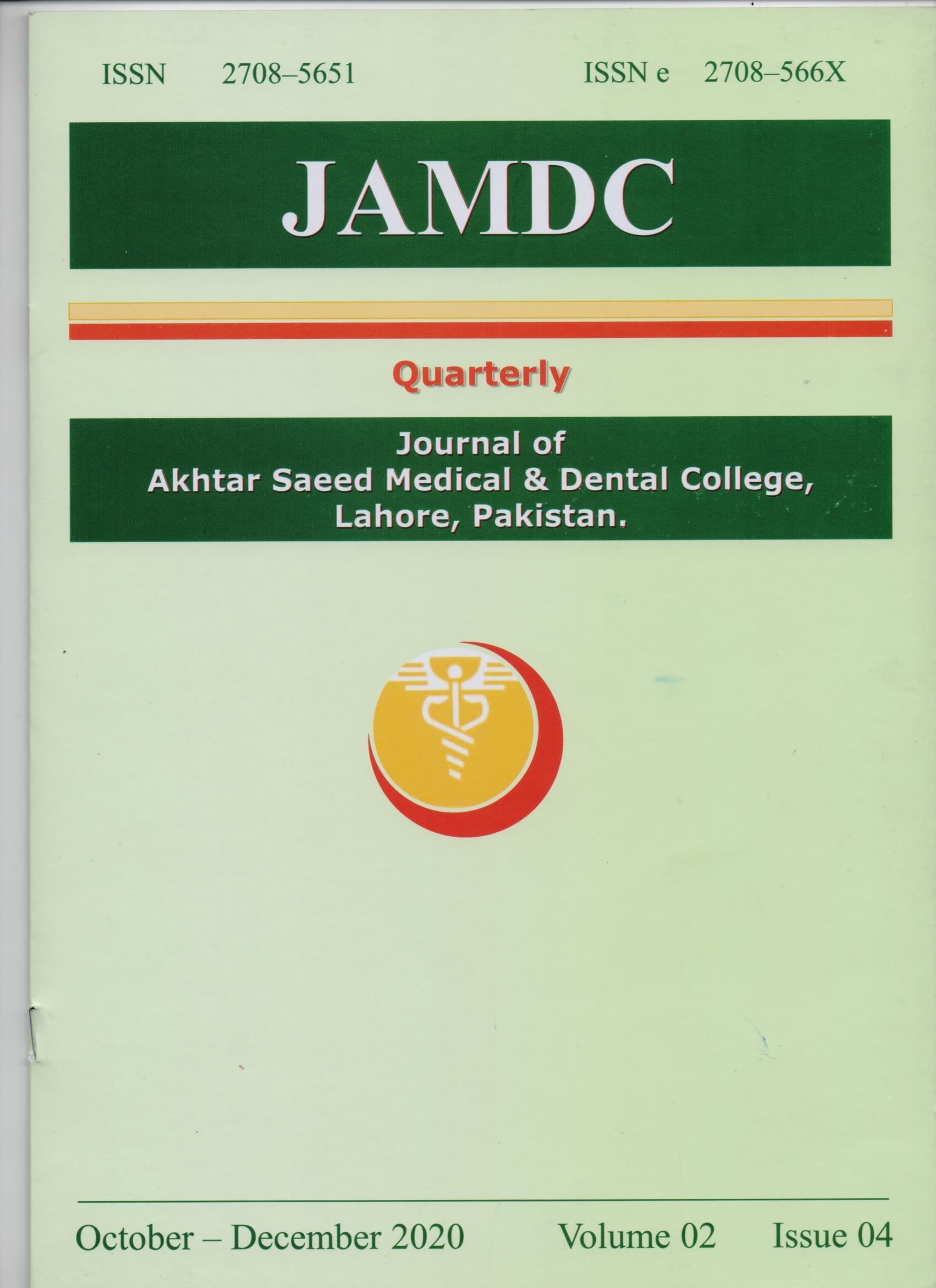PREVALENCE OF INTESTINAL PARASITIC INFESTATIONS IN RELATION TO WASTING; AMONG PRE-SCHOOL CHILDREN IN SKARDU, PAKISTAN
Main Article Content
Abstract
Background:
Parasitic infestations are one of the prominent public health problems. Children are affected the most and result in Malnutrition (Undernutrition), Iron deficiency anemia, learning problems and Gastro-intestinal disturbances. Malnutrition (undernutrition) may manifest in four broad forms: undernutrition, wasting, stunting, and micronutrient deficiencies. WHO defines ‘wasting’ as low weight-for-height. It often indicates recent and severe weight loss, although it can also persist for a long time. Wasting in children is associated with a higher risk of death if not treated properly. This community based, cross sectional study was aimed at determining the prevalence of intestinal parasitic infestations and their impact on the nutritional status, among pre-school children in Skardu, Pakistan.
Material and Methods:
A sample of 300 pre-school children was selected through convenience sampling. The demographic data was collected from the parents of children. The intestinal parasites were identified in the stool samples. The pediatric weight scale was used to measure the recumbent weight and the adult weight machine was used to measure the standing weight. The cut off limit for wasting was set at < -2SD of weight-for-age z score.
Results:
The prevalence of A.Lumbricoides, Cryptosporidium, H.Nana and Giardia was noted to be 22.33%, 14%, 9.3% and 8.0% respectively. Out of 300 preschool children, 47(15.7%) were found to be wasted. Out of wasted children, majority (35 children) were infested with some kind of intestinal parasite. This difference was statistically significant (p-value 0.001845).
Conclusion:
In this study, we found significant prevalence of intestinal parasitic infestation in preschool children of Skardu vis vis and its impact on the nutritional status. It is suggested that health promotion strategies should be developed, not only to control the intestinal parasitic infestations but also to improve the nutritional status of pre-school children

